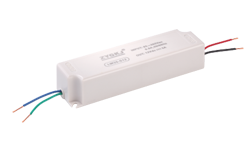nyheder
Module Power Supply: Ensuring Reliable and Efficient Power Delivery
Author: ZYG Power Module Time: 2023-11-21
Module power supply plays a crucial role in ensuring the reliable and efficient delivery of power to various electronic systems. With the ever-increasing complexity of electronic devices and their power requirements, it is essential to have a robust and dependable module power supply to meet the demands of modern technology. This article will explore the importance of module power supply, its components, and the challenges associated with its design and implementation.
Importance of Module Power Supply
In today’s fast-paced world, electronic devices have become an integral part of our daily lives. From smartphones to laptops, from gaming consoles to smart home appliances, we rely heavily on these devices. However, all these devices require a stable and efficient power supply to function optimally. Module power supply serves this purpose by converting the available input power to the desired output power levels while maintaining stability. It ensures that the electronic system receives the correct voltage, current, and frequency, preventing any damage to the device and ensuring its longevity.
Components of Module Power Supply
Module power supply consists of various components that work together to deliver reliable and efficient power. Let’s discuss some of the key components:
1. Transformer: The transformer is an essential component of module power supply. It converts the input voltage to the desired level, either stepping it up or stepping it down as required.
2. Rectifier: The rectifier converts the AC voltage from the transformer into DC voltage, which is easier to regulate and control.
3. Regulator: The regulator is responsible for maintaining a stable output voltage by adjusting the input voltage fluctuations. It ensures that the output voltage remains constant even when the input voltage varies.
4. Filter: The filter removes any noise or ripple present in the output voltage, providing a clean and stable power supply to the electronic system.
Challenges in Module Power Supply Design
Designing an efficient and reliable module power supply comes with its own set of challenges. Some of the major challenges include:
1. Size and Space Constraints: With the miniaturization of electronic devices, the size of module power supply needs to be compact and space-efficient. Designers must find innovative ways to optimize the power supply’s size while maintaining its functionality.
2. Heat Dissipation: Efficient heat dissipation is crucial to prevent overheating and ensure the longevity of the power supply. Designers need to consider the thermal management of the power supply to maintain its efficiency under varying load conditions.
3. Power Efficiency: With the increasing emphasis on energy conservation, power efficiency has become a significant concern in module power supply design. Designers need to minimize power losses and maximize energy conversion to meet the energy efficiency standards.
Conclusion
Module power supply is an integral part of modern electronic systems, ensuring the reliable and efficient delivery of power. Its components, including the transformer, rectifier, regulator, and filter, work together to convert and stabilize the power supply. Designers face challenges in terms of size constraints, heat dissipation, and power efficiency when designing module power supply. By overcoming these challenges, we can continue to enjoy the benefits of electronic devices while minimizing power consumption and maximizing their performance.
Tidligere: Fully Modular Power Supply: Ultimate Convenience and Versatility
Næste: Modular PC Power Supply: Streamlining Your Computer’s Energy Efficiency
relevant information
-
2023-4-14
AC-DC Converter: Changing Electrical Current for Efficient Power Conversion
An AC-DC converter is a device that changes alternating current (AC) to direct current (DC). It is commonly used in power supplies for electronic devices and appliances. The reason for converting AC to DC is that most electronic devices require DC to operate, whereas AC is the form of electricity that is delivered to homes and businesses. The conversion process of AC to DC involves several steps. The first step is to take the AC input and rectify it, which means converting it to a pulsating DC signal. This is achieved by using a diode or a bridge rectifier. The next step is to filter the pulsating DC signal using a capacitor or an inductor. This smooths out the signal...
Se detaljer -
2023-5-22
Efficient AC-DC Converter for Your Car: Power Up Your Devices on the Go
An efficient AC-DC converter for your car is a must-have device for anyone who frequently travels by car and needs to power up their devices on the go. With the increasing use of smartphones, tablets, laptops, and other electronic devices, it has become essential to have a reliable and efficient power source in your car. An AC-DC converter is a device that converts the alternating current (AC) from your car's battery to direct current (DC) that can be used to power up your devices. It is a small, portable device that can be plugged into your car's cigarette lighter socket or any other 12V power socket. There are many benefits to using an efficient AC-DC converter in your car. Firstly,...
Se detaljer -
2022-11-8
Sådan konverterer du din bil fra vekselstrøm til jævnstrøm
Hvad er fordelene ved at konvertere din bil fra vekselstrøm til jævnstrøm? Der er en række fordele ved at konvertere din bil fra vekselstrøm til jævnstrøm. Det mest oplagte er måske, at du vil spare penge på gas. Derudover vil konvertering af din bil til jævnstrøm også gøre den mere miljøvenlig, da den vil producere færre emissioner. Endelig vil konvertering til jævnstrøm også gøre din bil mere pålidelig, da den vil være mindre tilbøjelig til at gå i stykker. Hvordan konverterer du din bil fra AC til DC strøm? Der er et par måder, hvorpå du kan konvertere din bil fra vekselstrøm til jævnstrøm. Den første måde er at købe en inverter. En inverter vil...
Se detaljer -
2023-5-30
Bidirectional DC DC Converter: A Comprehensive Overview
A bidirectional DC DC converter is a power electronic device that can convert DC power from one voltage level to another in both directions. It has the capability to transfer power bidirectionally between two DC sources, such as batteries, capacitors, or fuel cells, with different voltage levels. This converter is widely used in various applications, such as electric vehicles, renewable energy systems, and energy storage systems, due to its high efficiency, compact size, and low cost. The basic structure of a bidirectional DC DC converter consists of two power switches (MOSFET or IGBT), two diodes, and an inductor. The switches are controlled by a pulse-width modulation (PWM) signal to regulate the output voltage and current. The diodes are used to...
Se detaljer -
2023-9-24
Best Modular Power Supply for Gaming PC
When it comes to building a gaming PC, one of the most crucial components to consider is the power supply. A modular power supply is often preferred for its ease of cable management and customization options. In this article, we will explore some of the best modular power supplies available in the market for gaming PCs.1. Corsair RM750xThe Corsair RM750x is a top choice for many gamers due to its excellent performance and reliability. With a power output of 750 watts, it can easily handle the power demands of high-end gaming systems. The RM750x features an 80 Plus Gold certification, which means it operates at high efficiency levels, resulting in less wasted energy and lower electricity bills. The fully modular...
Se detaljer -
2023-9-1
Electric Power Series: Harnessing the Energy of Electricity
Electricity is an essential part of our everyday lives. From powering our homes to fueling our industries, electricity has become a fundamental resource. The ability to harness and utilize electrical energy has revolutionized the way we live and work. The concept of harnessing electricity dates back to ancient times, with the discovery of static electricity by the Greeks. However, it was not until the late 19th century that electricity began to be generated and distributed on a large scale. The first step in harnessing electrical energy is the generation of electricity. This is typically done through power plants, which convert various forms of energy, such as fossil fuels, nuclear energy, and renewable sources like solar and wind, into electrical energy....
Se detaljer



















